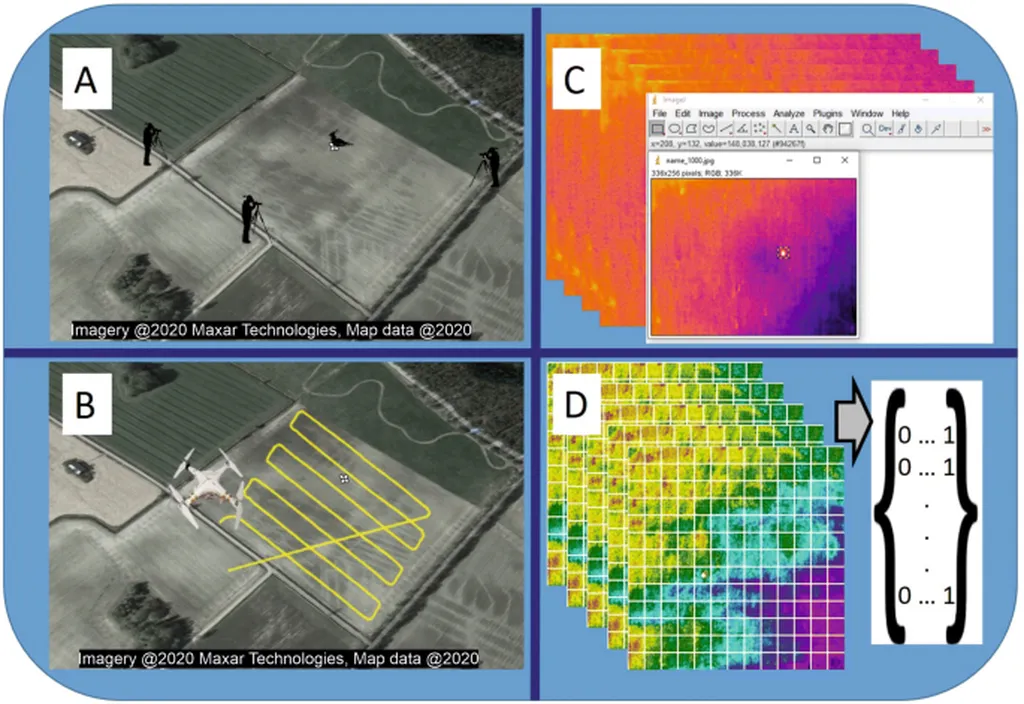In the heart of Germany, researchers are pioneering a novel approach to tackle an age-old problem in agriculture: the detection of stones in fields. Florian Thürkow, from the Institute for Geo-Information and Land Surveying at Anhalt University of Applied Sciences, has been leading a study that could revolutionize precision farming. The research, published in *AgriEngineering* (translated to English as “Agricultural Engineering”), explores the use of thermal imaging from unmanned aerial systems (UAS) to identify stones, offering a non-invasive and efficient solution to a persistent challenge.
Stones in agricultural fields are more than just an eyesore; they pose a significant risk to machinery and can disrupt field operations. As modern agriculture increasingly embraces automation and precision farming, the need for efficient stone detection has become paramount. Thürkow’s research delves into the potential of thermal imaging as a tool to detect stones under varying environmental conditions.
The study’s findings are grounded in the principle that stones exhibit higher surface temperatures than the surrounding soil, particularly when soil moisture is high and air temperatures are cooling rapidly. “Stones have a higher thermal inertia, which means they absorb and retain heat longer than soil,” Thürkow explains. “This temperature difference, combined with the evaporative cooling from moist soil, makes stones stand out in thermal imagery.”
The implications of this research are vast. By incorporating thermal cameras with GPS mapping, farmers can generate accurate location data, facilitating targeted stone removal and reducing equipment damage. This approach aligns with the goals of sustainable agricultural engineering, supporting field automation, minimizing mechanical inefficiencies, and promoting data-driven decisions.
The commercial impacts of this technology extend beyond the agricultural sector. In the energy sector, for instance, the ability to detect and map stones efficiently could enhance the planning and maintenance of solar farms and wind turbines, where stone-related damage can be a significant concern.
Thürkow’s work is a testament to the power of innovative thinking in addressing longstanding challenges. As the agricultural industry continues to evolve, the integration of thermal imaging technology could pave the way for more efficient, sustainable, and automated farming practices. This research not only shapes the future of agriculture but also sets a precedent for how technology can be leveraged to solve real-world problems in innovative ways.

